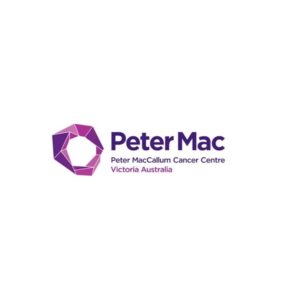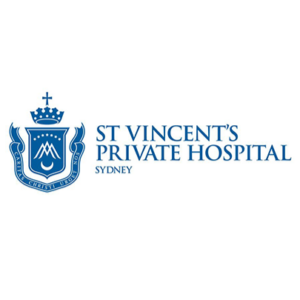Breast cancera disease where abnormal cells split without control and spread to other nearby body tissue and/or organs is a relatively common type of cancer that develops in the breast, a glandular organ situated over the ribcage. While men and women both have breasts, the anatomy of the breast is slightly different between the sexes.
Breasts in females are functional organs that are used to produce milk during and after pregnancy. Female breasts are primarily made up of lobes, lobules, and ducts, which are surrounded by fatty and connective tissuea group of cells that work together to perform a function. Each breast is divided into 12-20 sections called lobes. Each lobe is made up of lobules that produce breast milk, which is then sent to the ducts. The ducts in the breasts carry milk to the nipple to be fed to babies.
In males, the breast is a non-functional organ that cannot produce milk. Unlike female breasts, male breasts do not generally contain lobes and lobules. Ducts are present in male breasts, however they do not have a function.
Breast cancer is more common in women, and is generally diagnosed in people over 40. However, it can affect anyone with breasts – including women, teenagers, transgender men, transgender women, intersex people, non-binary individuals, children, and men – at any age.
For information about breast cancer in men, please refer to the Rare Cancers Australia Breast Cancer (Male) page.
Types of Breast Cancer
There are several different types of breast cancer, which are classified based on the types of cellsthe basic structural and functional unit of all living things the cancer originates from.
Non-Invasive Breast Cancer
Non-invasive breast cancers, also known as carcinomas in situ, are pre-cancerous conditions that can occur in the milk ducts or the lobes of the breast. Patients with non-invasive breast cancers have cells that look like cancer cells, but they have not invaded nearby tissue. These cells may become cancerous if left untreated.
Ductal Carcinoma in Situ (DCIS)
Ductal carcinoma in situpre-cancerous condition where abnormal cells haven't spread beyond the place they developed (DCIS) is the most common type of non-invasive breast cancer, and is defined as abnormal cells in the ducts of the breasts. This condition is not cancerous, but may develop into an invasive breast cancer if left untreated. DCIS is often treated similarly to invasive breast cancers.
Lobular Carcinoma in Situ (LCIS)
Lobular carcinomacancer arising from tissues that line organs in situ (LCIS) is a less common type of non-invasive breast cancer, and is defined as abnormal cells in the lobules of the breasts. This condition is not cancerous, but may increase the riskthe possibility that something bad will happen of developing an invasive breast cancer later in life.
Invasive Breast Cancer
Invasive breast cancers are cancerous conditions that have spread outside of the ducts and lobules, and into nearby tissue. Most breast cancers are invasive.
Invasive breast cancers can be classified by how much they have spread. Some of these classifications include:
- Early breast cancer (cancer confined to the breast, less than 5cm, and may affect lymph nodessmall bean-shaped structures that filters harmful substances from lymph fluid in the breast).
- Locally advancedat a late stage, far along breast cancer (cancer is over 5cm, or has spread to areas near the breast to the skin, chest wall and/or muscle).
- Metastatic breast cancer (cancer that has spread to more distant parts of the body, such as the bones, liver, and/or lungs).
Invasive breast cancers can also be classified by the type of cells they develop from.
Invasive Ductal Carcinoma
Invasive ductal carcinoma (IDC), also known as infiltrating ductal carcinoma, is the most common type of breast cancer. It occurs when abnormal cells in the ducts of the breast have spread beyond the lining of the milk duct, and into surrounding breast tissue. While IDC can be aggressive and may metastasise, it can have a good prognosisto predict how a disease/condition may progress and what the outcome might be when caught early.
While IDC is common, there are rare subtypes of this disease, including:
- Medullary carcinoma of the breast (IDC with cells that look similar to the medulla in the brain).
- Mucinous (colloid) carcinoma of the breast (IDC that produces excess mucus (or mucin)).
- Papillary carcinoma of the breast (IDC with cells that have finger-like projections, or papules).
- Apocrine breast cancer (IDC that have cells that appear similar to those generally found in sweat glands).
- Tubular breast cancer (IDC that has cells that look like tubes).
Invasive Lobular Carcinoma
Invasive lobular carcinoma (ILC) is the second most common type of breast cancer. It occurs when abnormal cells in the lobules of the breast have spread beyond the lining of the lobule, and into surrounding breast tissue. While ILC can be aggressive and may metastasise, it can have a good prognosis when caught early.
Pleomorphic Lobular Carcinoma
Pleomorphicmany forms; cells that have different size, shape etc. lobular carcinoma (PLC) is a recently recognised and rare subtype of ILC that is characterised by varying shapes and sizes of lobular carcinoma cells. Unlike ILC, PLC generally has greater involvement of the nipple and areolaarea of pigmented skin surrounding the nipple areas, and can have a less noticeable lump in the breast. PLC is often diagnosed at a later stage of disease, tends to be more aggressive, and may not have as good of a prognosis as other types of breast cancer.
Paget’s Disease of the Nipple
Paget’s disease of the nipple, also known as Paget’s disease of the breast or mammary Paget’s disease, is a rare type of breast cancer that primarily affects the nipple and areola (area surrounding the nipple). This type of cancer is often associated with carcinomas, and often develops in people who have another form of breast cancer.
For more information on Paget’s disease of the nipple, please refer to the Rare Cancers Australia Paget’s Disease of the Nipple page.
Inflammatory Breast Cancer
Inflammatory breast cancer is a rare subtype of breast cancer that develops from the bloodthe red bodily fluid that transports oxygen and other nutrients around the body vessels in the skin of the breast and/or the lymphatic vessels of the breast. It generally occurs when cancer cells block these vessels, causing the breast to become swollen and red. Inflammatory breast cancer is generally aggressive, likely to metastasise, and may not have as good of a prognosis as other types of breast cancer.
Phyllodes Tumours in the Breast
Phyllodes tumours in the breast are a very rare subtype of breast cancer that begins in the connective or stromal tissue in the breast (outside of the ducts, lobules and lobes). Most of these cancers are benignnot cancerous, can grow but will not spread to other body parts, however in rare cases they may be malignantcancerous, may grow and spread to other areas of the body. Malignant phyllodes tumours of the breast can be aggressive, rarely metastasise, and can have a good prognosis when caught early.
Metaplastic Breast Cancer
Metaplastic breast cancer is a very rare subtype of breast cancer that may contain different types of cancer cells. It begins in the ducts of the breast, and contains cells that look like IDC. However, in addition to these cells, the cancer may also contain cells resembling soft tissuetissue/the material that joins, holds up or surrounds inside body parts such as fat, muscle, ligaments and lining around joints and connective tissue in the breast. While it is not known how this occurs, it is thought that ductal cells undergo a change in form (or metaplasia) to become different cells. Metaplastic breast cancer is generally aggressive, likely to metastasise, and may not have as good of a prognosis as other types of breast cancer.
Angiosarcoma of the Breast
Angiosarcomas of the breast are a very rare subtype of breast cancer that develop in the lining of blood vessels or lymph vesselsa network/chain of thin tubes that moves lymph fluid around the body in the breast. This type of cancer is often more aggressive than other types of breast cancer.
For more information on angiosarcoma of the breast, please refer to the Rare Cancers Australia Angiosarcoma page.
Pregnancy-Associated Breast Cancer
Pregnancy-associated breast cancer (PABC), also known as pregnancy-related breast cancer or gestational breast cancer, is a very rare type of breast cancer that is diagnosed in women during pregnancy, or in the first year after the baby has been born. In most cases, PACB occurs as an IDC, but can also occur as other types. This type of cancer is often diagnosed late due to the changes of the body throughout pregnancy and/or breastfeeding. PACB is often aggressive, likely to metastasise, and may not have as good of a prognosis as other types of breast cancer.
Breast Cancer Receptor Status
In addition to the types of cells they originate from, breast cancers are also classified by their receptor status.
Receptors are defined as proteins on the surface of the cells that signal a specific response in the body. These cells can initiate many important functions within a cell, such as cell growth, cell division, or cell death. Cancer cells have unique receptors that promote their growth and survival.
In breast cancer, there are three main types of receptors that cancer cells are tested for.
Hormone Receptors
When breast cancers have hormonea chemical substance produced by glands in the endocrine system that regulates various functions in the body receptors on them (or are hormone receptor positive), the growth of the cancer cells are influenced by the female hormones’ oestrogen and progesterone. The cancer cells can have oestrogen receptors (OR), progesterone receptors (PR), or a combination of both. Many cancers are hormone receptor positive, and are often treated hormone-blocking therapy.
Human Epidermal Growth Factor Receptor 2 (HER2)
Human epidermal growth factor receptor 2 (HER2) is a receptor on the surface of normal cells that help maintain cell growth. In HER2 positive cancer cells, there is excess HER2 which promotes the growth of cancer cells. HER2 breast cancers are generally hormone receptor negative, but can be positive in rare instances. Breast cancers that are positive for this receptor generally grow faster than those without it.
Triple Negative Breast Cancer
Triple negative breast cancer occurs when breast cancer cells are negative for both hormone receptors (oestrogen and progesterone receptors) and HER2. This type of cancer is rare, grows quickly, and is often aggressive.
Treatment
If breast cancer is detected, it will be staged and graded based on size, metastasiswhen the cancer has spread to other parts of the body, also known as mets, and how the cancer cells look under the microscope. Stagingthe process of determining how big the cancer is, where it started and if it has spread to other areas and grading helps your doctors determine the best treatment for you.
Cancers can be staged using the TNM staging system:
- T (tumoura tissue mass that forms from groups of unhealthy cells) indicates the size and depth of the tumour.
- N (nodea small lump or mass of tissue in your body) indicates whether the cancer has spread to nearby lymph nodes.
- M (metastasis) indicates whether the cancer has spread to other parts of the body.
This system can also be used in combination with a numerical value, from stage 0-IV:
- Stage 0: this stage describes cancer cells in the place of origin (or ‘in situ’) that have not spread to nearby tissue.
- Stage I: cancer cells have begun to spread to nearby tissue. It is not deeply embedded into nearby tissue and had not spread to lymph nodes. This stage is also known as early-stage cancer.
- Stage II: cancer cells have grown deeper into nearby tissue. Lymph nodes may or may not be affected. This is also known as localisedaffecting only one area of body cancer.
- Stage III: the cancer has become larger and has grown deeper into nearby tissue. Lymph nodes are generally affected at this stage. This is also known as localised cancer.
- Stage IV: the cancer has spread to other tissues and organs in the body. This is also known as advanced or metastatic cancer.
Cancers can also be graded based on the rate of growth and how likely they are to spread:
- Gradea description of how abnormal cancer cells and tissue look under a microscope when compared to healthy cells I: cancer cells present as slightly abnormal and are usually slow growing. This is also known as a low-grade tumour.
- Grade II: cancer cells present as abnormal and grow faster than grade-I tumours. This is also known as an intermediate-grade tumour.
- Grade III: cancer cells present as very abnormal and grow quickly. This is also known as a high-grade tumour.
Once your tumour has been staged and graded, your doctor may recommend genetic testinga procedure that analyses DNA to identify changes in genes, chromosomes and proteins, which can be used to analyse tumour DNA to help determine which treatment has the greatest chance of success, which analyses your tumour DNA and can help determine which treatment has the greatest chance of success. They will then discuss the most appropriate treatment option for you.
Treatment for breast cancers may include:
- Surgerytreatment involving removal of cancerous tissue and/or tumours and a margin of healthy tissue around it to reduce recurrence, potentially including:
- Lumpectomya surgical procedure where the tumour and a small amount of surrounding breast tissue are removed, also known as breast conserving surgery, also known as breast-conserving surgerya surgical procedure where the tumour and a small amount of surrounding breast tissue are removed, also known as a lumpectomy.
- Unilateralaffecting one side or bilateralaffecting both sides mastectomycomplete or partial removal of one or both breasts.
- Breast reconstructiona surgery to recreate a natural-looking breast after a mastectomy.
- Lymphadenectomysurgical removal of lymph node(s).
- Chemotherapya cancer treatment that uses drugs to kill or slow the growth of cancer cells, while minimising damage to healthy cells.
- Radiation therapya treatment that uses controlled doses of radiation to damage or kill cancer cells.
- Hormone therapymedication that alters the levels of certain hormones in the body, such as oestrogen and progesterone (to reduce hormones in hormone receptor positive cancers), potentially including:
- Tamoxifen.
- Aromatase inhibitors.
- Ovarian suppression.
- Targeted therapymedication that targets specific molecular features of cancer cells (commonly for HER2 positive cancers), including:
- Trastuzumab.
- PARP (poly adenosine diphosphate ribose polymerase) inhibitors.
- Herceptin.
- Perjeta.
- Kadcyla.
- Tykerb.
- Clinical trialsresearch studies performed to test new treatments, tests or procedures and evaluate their effectiveness on various diseases.
- Palliative carea variety of practices and exercises used to provide pain relief and improve quality of life without curing the disease.
Breastfeeding and Breast Cancer Treatment
Treatment for breast cancer may affect your ability to breastfeed. If this is a concern to you, discuss your options with your doctor prior to the commencement of treatment.
Risk factors
While the cause of breast cancer remains unknown, the following factors may increase the likelihood of developing the disease:
- Being female.
- Being over 40 years old.
- Being overweight/obesity.
- Alcohol consumption.
- Not getting enough exercise.
- Having a history of smoking.
- Having specific genetic mutations, most commonly associated with the BRCA1 and BRCA2 genes.
- Certain hormonal therapies, potentially including:
- Menopause hormonal therapy (MHT).
- Hormone replacement therapymedication that increase the levels of certain hormones in the body (HRT).
- Oral contraceptive over long periods of time.
- Hormonal intrauterine devices (IUDs) over long periods of time.
- Diethylstilboestrol (DES) when your mother or you were pregnant.
- Gender-affirming hormones for more than five years.
- Having a family history of breast cancer, DCIS, and/or LCIS.
- Hyperplasia of breast cells.
- Previous radiation therapy to the chest area for Hodgkin lymphomacancers of the lymphatic system.
- Klinefelter syndrome.
- Li-Fraumeni syndrome.
- Reproductive factors, potentially including:
- Never having given birth.
- Beginning menstruation before the age of 12.
- Being over 30 when you gave birth to your first child.
- Never having breastfed.
- Going through menopause over the age of 55.
- Having a personal history of cancer.
Not everyone with these risk factors will develop the disease, and some people who have the disease may have none of these risk factors. See your general practitioner (GP) if you are concerned.
Symptoms
In the early stages of breast cancer, the disease may be asymptomatic. As the cancer progresses, some of the following symptoms may appear:
- A lump or lumpiness in the breast(s).
- A change in the size and/or shape of the breast.
- Swollen breasts.
- Changes to the nipple, potentially including:
- Changes in shape.
- Crusting, sores and/or ulcers.
- Unusual redness.
- Pain.
- Clear or bloody discharge.
- Inverted nipple (nipple turns inward when it used to face outward).
- Dimpling or indentation on the skin of the breast.
- A rash and/or itchiness of the breast.
- A scaly appearance and/or changes in the colour of the breast.
- Swelling or discomfort in the armpit or near the collarbone.
- Persistent, unusual pain not associated with the menstrual cycle.
Not everyone with the symptoms above will have cancer, but see your GP if you are concerned.
Diagnosis
If your doctor suspects you have breast cancer, they may order the following tests to confirm the diagnosisthe process of identifying a disease based on signs and symptoms, patient history and medical test results and refer you to a specialist for treatment:
- Physical examinationan examination of your current symptoms, affected area(s) and overall medical history.
- Imagingtests that create detailed images of areas inside the body tests, potentially including:
- Mammograma type of medical imaging that uses x-rays to create detailed images of breast tissue.
- Ultrasounda type of medical imaging that uses soundwaves to create detailed images of the body .
- Blood teststesting done to measure the levels of certain substances in the blood.
- Biopsyremoval of a section of tissue to analyse for cancer cells.











